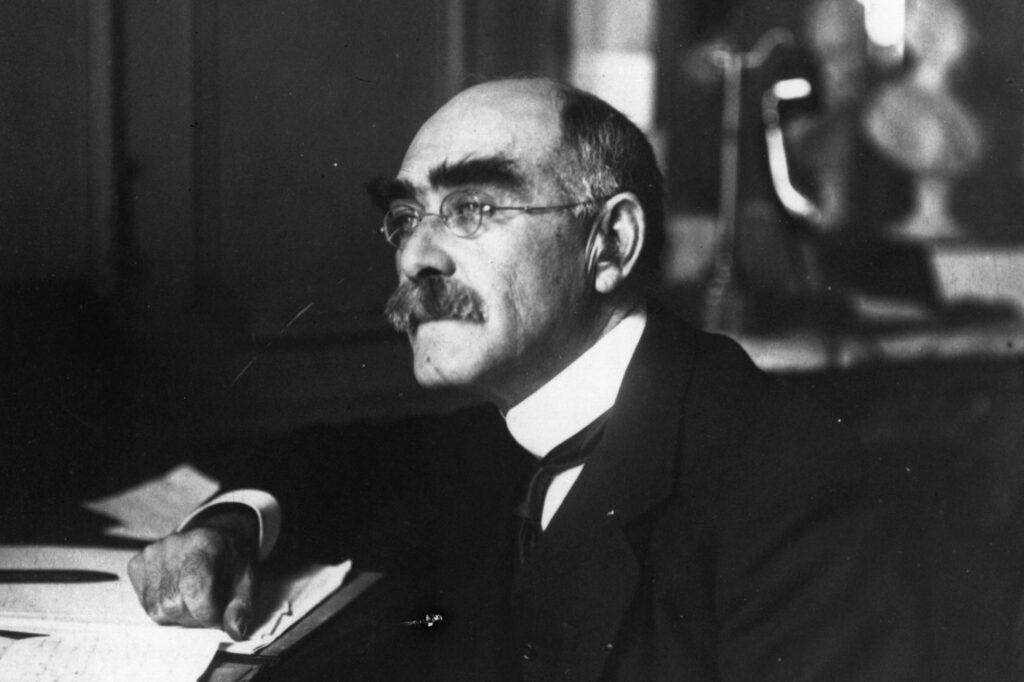Before Disney adapted the story of the man-cub Mowgli, the books series The Jungle Book was loved and appreciated by many. But who was the genius behind the collection?
Rudyard Kipling was a Bombay-born literary genius who came up with the classics like The Jungle Book, Just So Stories for Little Children, and Kim. Before his success, he worked as an assistant to the editor of a Lahore newspaper.
Who is Rudyard Kipling?
Joseph Rudyard Kipling was born on December 30, 1865, in Bomba, India to John Lockwood Kipling, an artist and scholar, and to Alice MacDonald.
Kipling had an unhappy childhood. He was taken back to England when he turned six but was left at a foster home in Southsea for five years. His miserable life at the place was vividly described in one of his stories; Baa Baa, Black Sheep.
Kipling’s aunts married successful painters and members of the society in their time, making him a cousin to Stanley Brown who soon became Britain’s Prime Minister in the 1920s. His familial ties played a great role in his status in society.
Upon his return to India in 1882, Kipling worked as an editorial assistant in a small Lahore newspaper for seven years. Kipling’s membership in the Anglo-Indian society further formed his writing style, influencing the central themes he soon portrayed.
Kipling met and then married Caroline Balestier in 1892. Balestier’s sister was married to an American publisher. Kipling soon worked with him in the later years, thus helping him start his career as a writer.
The couple moved and resided on the Kiplings’ Vermont property. They didn’t quite fit the norms in Vermont at that time and soon decided to return to England in 1896. He soon became an established author when his best-known novels were published by the 1890s.
In the early 1900s, Cecil Rhodes, a South African diamond dealer, gifted Kipling a house in South Africa. There he spent a great deal of time writing. Rhodes’ societal views and opinions as a Prime Minister for the Cape Colony further nourished Kipling’s views on British imperialism and soon found their way in his published works.
Kipling passed away on January 18, 1936, in London. (Source: Britannica)
The Hidden Meaning behind The Jungle Book
Kipling’s poems and short stories became popular in the late nineteenth and early twentieth centuries. Rudyard Kipling’s The Jungle Book, published in 1894, was an instant success enjoyed by both children and adults.
The Jungle Book collection tells a story about a human boy named Mowgli and how he lived in the wild being raised by wolves. This was something new to everyone. In these stories, the animals served as both allies and adversaries to Mowgli. The bear Baloo, the panther Bagheera, and the tiger Shere Khan have become well-known characters, each depicting their personality and showing their motives towards Mowgli.
Kipling’s hidden messages aren’t apparent to an average reader. For example, The Jungle Book stories are riddled with references to the concept of belonging. It raises the question of whether membership in a society is gained solely by birth or whether societal factors play a role in it.
Non-critical readers would have missed this and will take the story as a fantasy-fiction piece created for pure entertainment purposes.
The novel, many argue, was Kipling’s way of expressing his take on his status in the society, a white imperialist born and raised in India. The book can be considered as an opportunity for the reader to gain an insight into British colonial practices in Kipling’s time. (Source: The Conversation)
